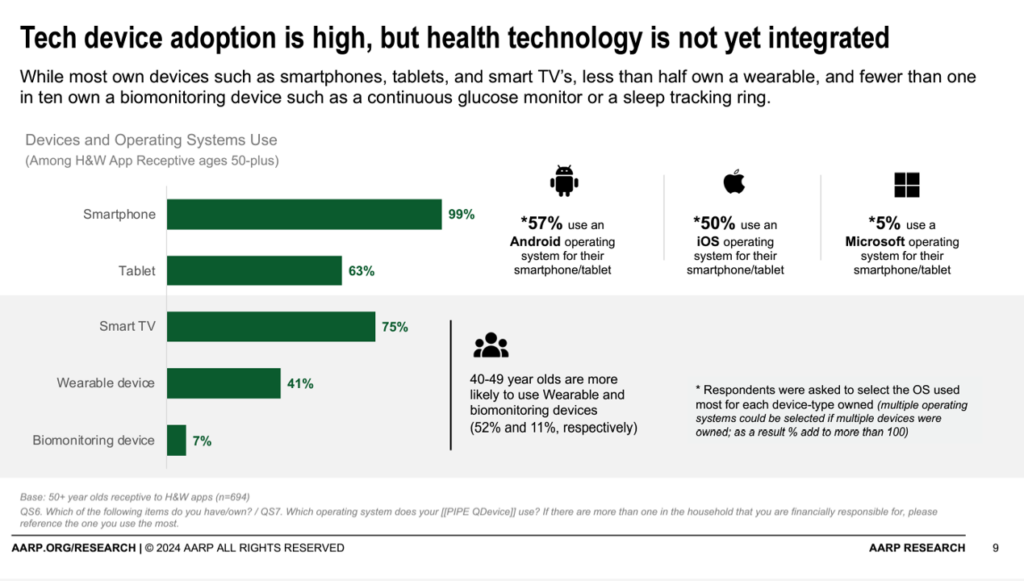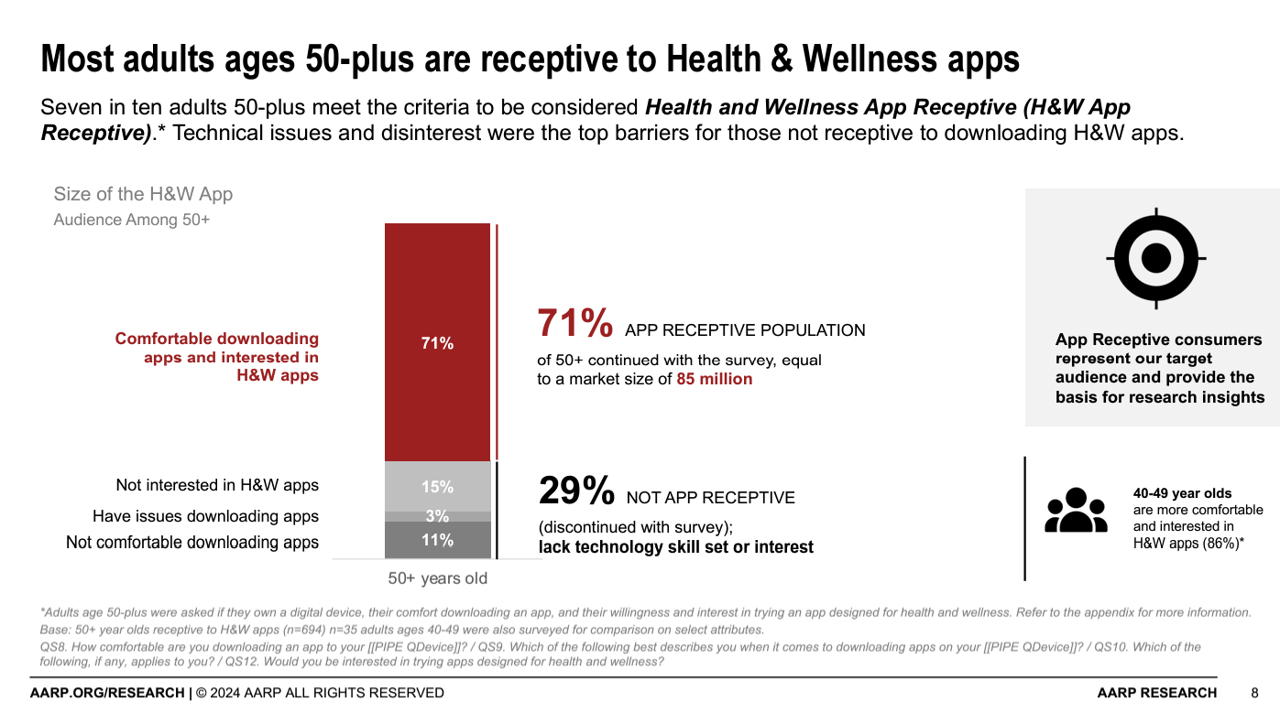AARP found that 7 in 10 people ages 50+ are “app-receptive” for health and wellness apps in Unlocking Health and Wellness Apps: Experiences of Adults Age 50-Plus, a summary of research conducted with U.S. consumers 50 and over from AARP. 
The methodology for this study included only older consumers who were comfortable in downloading apps to smartphones or tablets, and were willing to do so — whom AARP considered the target audience for this research. In addition, the respondents surveyed were also at least interested in trying apps designed for health and wellness, thus dubbed “health and wellness app receptive). 
While this audience of app-receptive folks own smartphones, tablets, and smart TVs, fewer than half own some type of wearable technology such as a smartwatch or fitness wristband. Only 7% reported using a biomonitoring (e.g., remote health monitoring) device.
Older H&W receptive consumers are deemed “self-motivated” via AARP’s findings, and they rely on recommendations (43% of these consumers), general searches (39%), and app reviews (29%).
Only 11% of these app-receptive older consumers rely on doctor recommendations for health and wellness apps. ![]()
Interested in what health and wellness apps could do, the top-ranked use for the tools would be for tracking fitness and physical activity among 55% of these older consumers. Ranking second behind activity tracking was to monitor health, for 28% of the older consumers — roughly one-half of those favoring general physical and fitness tracking.
Third and fourth place went to using for personal goal-setting and tracking nutrition and diet, respectively, shown in the blue bar chart. 
Importantly, this two-circle chart tells us that folks dealing with chronic conditions are generally not using technology to help them manage those issues.
Two-thirds of the receptive health-app consumers agree that tech enables them to live healthy lives, yet among the 63% of these people who have a chronic condition, only 20% are using tech to manage their health.
Yet 60% of the consumers are aware of the tech and still not using it.
Why not? Some of the reason is cost.

Health Populi’s Hot Points: If free is the price of admission for older U.S. health citizens’ health-app engagement, then payment for apps and digital health tools need to find another payer.
Add in two more factors to the cost obstacle: first, that tech device adoption is high, and health technology not well integrated into older peoples’ life-flows with their tech; and second, that very few app-receptive older consumers receive recommendations or “prescriptions” (small “p”) from their doctors.
This argues for a bundled approach to health tools personalized for a patient, a concept my smart colleague Laurie Orlov calls “suites.” In her write-up on the idea of health-tech suites, Laurie talks about 3 versions of integrated bundles that solution providers should develop: the AgeTech Health Suite, the AgeTech Mobility Suite, and the AgeTech Home and Safety Suite.
Most pertinent to the AARP research, the Health Suite might include condition-monitoring technologies (say, for diabetes, heart issues, and other common chronic issues), in addition to symptom verification, training about the condition (health education — also important for digital literacy as well as health literacy), tools tor mitigation and coping, medication management, and access to peer communities for support and collegiality.
Such bundles (or suites) would be so useful for all patients, but in particular older people who might be daunted by curating their own portfolio of apps and tools. Furthermore, with most of these consumers preferring free apps — some willing to put up with ads (57%) in exchange for “free” — a payer or group health plan in a value-based environment could find this approach a win-win for both the payer and patient and family to support folks aging well at home with chronic conditions that can be, to some extent, self-managed.





 Thanks to Feedspot for naming this blog, Health Populi, as a
Thanks to Feedspot for naming this blog, Health Populi, as a